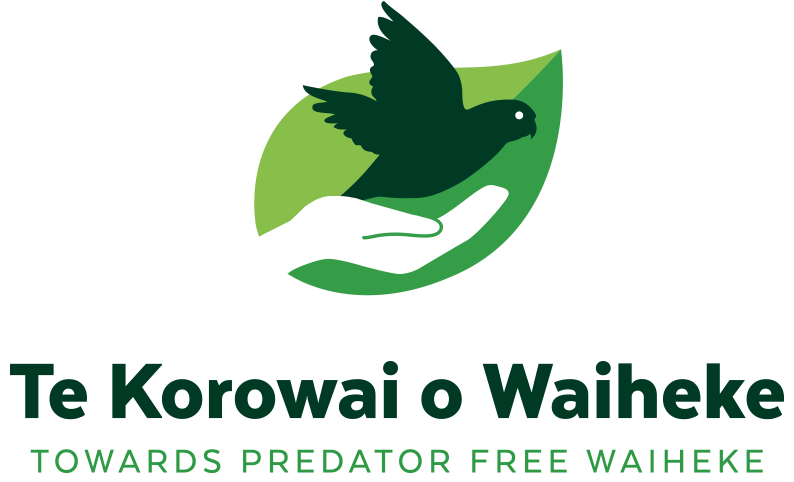Shags, an essential part of experiencing coastal Aotearoa — Written by Te Korowai o Waiheke Team Member
This long-necked creature hollers from overhanging coastal pōhutukawa, it darts expertly behind your fishing boat or is found standing silhouetted drying its wings at the end of the wharf.
Shags, in my opinion, are an essential part of experiencing coastal Aotearoa. Some people may know them as the relentless and hungry bird that nicks bait and fish from the end of your line, their snake-like neck appearing loch-ness-style to the rear of your boat the moment your line is cast. Tīkapa Moana is home to 5 species of shag, pied being the most easily recognised.
Shags are a tenacious and dynamic seabird found all over the country, from Auckland to the Auckland Islands. They build their nests tediously in the heights of coastal trees and on rocky outcrops. A roost of pied shags, or kāruhiruhi, is no quiet place. As birds fly in to land there is an uproar of hollow screeches and disgruntled shuffling. One bird is ruffled with the tips of his wings, tail and bill pointed towards the sky and a most unhappy look on his face. His eye is the same colour as the water around him, so much so it seems I am looking straight through his skull and out the other side. The bright turquoise is framed by the blush of his gape and canary yellow eye patch. For a bird typically designed in camouflage, they know how to keep things colourful, as do most shags! All of New Zealand’s shag species have bright, unique colours that stand them apart from the typical drab uniform of seabirds.
Their cousin, the vibrant spotted shag, was once a common sight in the Hauraki Gulf. Their nesting is now restricted to select offshore islands where they are able to seek refuge from mainland predators. Predator free Ōtata Island, of The Noises archipelago, is an example of a dedicated attempt at returning these charismatic birds to the gulf, with decoys and sound systems installed to encourage curious birds in for a safe place to start a family. Tarahiki and two smaller islands belonging to Waiheke are some of the few spots left in the gulf to see them, so next time you’re out for a fish and you see a shag fly past, have a closer look as it may be someone a little more special.
- Written by Monitoring Technician Charlie Thomas. Pied Shag photo and Auckland Shag photo captured by Charlie Thomas.



